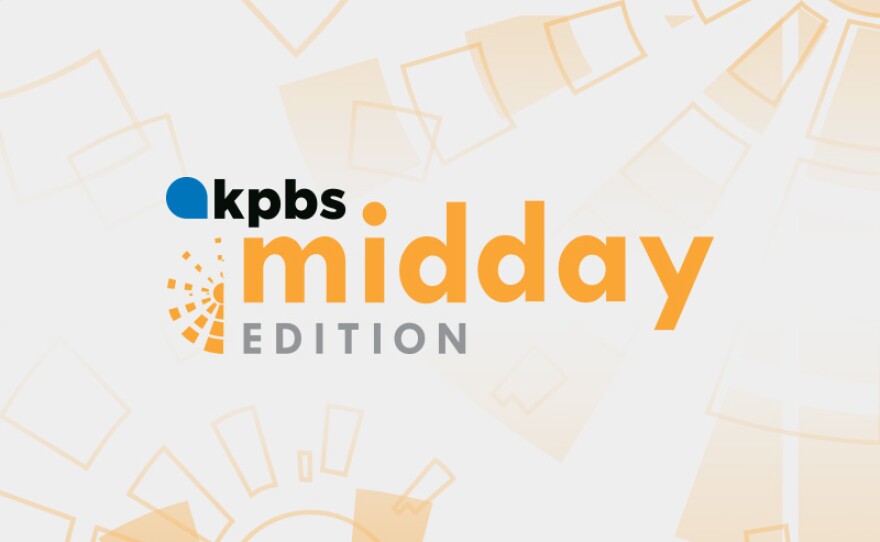Recovery Slow For Valley Fire Victims Who Lost Homes, Businesses
Speaker 1: 00:00 As our red flag warning continues in San Diego County. This bout of low humidity and strong winds is a frightening reminder for victims of the worst fires seen so far in San Diego. This year, last September is Valley fire. The people who lost their homes and livelihoods are still trying to recover. Joining me as I new source reporter Comey, Von canal and Comey. Welcome. Thank you so much has happened since September. Can you remind us about the Valley fire, where it was located and how severe it was? Speaker 2: 00:32 Yeah, of course. So it started on September 5th, um, sort of between Alpine and Hemal and it spread to places like lions Valley, which is where 78 year old Eileen Menzies lives. Um, and she saw it approach her home. Speaker 1: 00:46 We have seen fires easily about every four years, they get fairly serious, but this is the first time it's come over the Hill. Speaker 2: 00:54 And then after, you know, by the time it was fully contained, 16,000 acres had been burned by the Valley fire. 30 homes were lost, including Eileen Menzies, home six per day managed and an additional 34 structures were lost. Speaker 1: 01:08 So what were the conditions like during the fire? Was it a strong Santa Ana? Speaker 2: 01:14 Um, so it wasn't quite the same conditions as we're experiencing. Now, there was a heat wave for sure. The, I just looked up the high temperatures and homo in early September and it was in the hundred and teens, um, and the heat wave was statewide. So there was a bunch of fires raging all over the state at the time. And the winds came in sort of on day two or three of the fire and made it a bit difficult to contain later on. Now have officials Speaker 1: 01:38 Determine the cost of the fire. Speaker 2: 01:39 So they're still tallying the cost of the fire to local governments. It's looking like it's close to around 7 million now. And that includes the cost of the staff response and some aftermath programs like debris removal and some damage to government property to, um, that the costs to residents haven't been fully tallied yet. Other than the tally of the lost homes you read, Speaker 1: 02:05 I recently spoke with some of the people who are still trying to recover from their losses. Tell us about the people you mean. Speaker 2: 02:12 Yeah. So one of them is Eileen Menzies, who we heard from earlier. She's lived near homo for decades and is used to fires. Her son actually lost his home to wildfire and your Alpine two years ago. And it's just moving back into his rebuilt home now. So that's sort of an indicator of how long these recoveries can take. And, um, Eileen Menzies is determined to rebuild and replace her mobile home that burned right now. She's clearing her lands, kind of sorting through the rubble. Um, and I've spoke to another person, Joshua havens who lives near, um, Alpine, who hasn't even started clearing his land because, um, the paperwork is, has, or he's had issues with paperwork. So there's just kind of a spectrum in terms of people are in their recoveries. Right now, Speaker 1: 03:01 It's been a record breaking year for wildfires in California are the devastating fires in Northern California and other areas of the state sort of draining resources and help for victims of the Valley fire. Speaker 2: 03:14 So it's sort of a complicated answer because at the time of the fires, Cal fire was definitely strained. Firefighters were in a high demand everywhere. Um, but in the aftermath, it may actually be the opposite. The fact that there were fires elsewhere has kind of helped at the local area because, um, the Valley fire was bundled with a bunch of those other September fires in a federal disaster declaration. And it was, it was almost too small to have been declared a federal disaster on its own, but because it was during this heat wave, um, it was declared a federal disaster and that gives access to federal resources like limited grants from FEMA and loans from the small business administration. Speaker 1: 03:57 And I say, it's gotten to be very hard for people in wildfire prone areas to get, or to afford insurance on their homes. Hasn't it? Speaker 2: 04:07 Yeah, absolutely. This has been an issue that's become much more apparent and relevant. In recent years, insurance companies are dropping people in high fire risk areas are increasing the cost. And the last resort option available to Californians is really expensive. And the County surveyed people who registered for aid after the Valley fire, um, there was around a hundred or so households and around a third of them declared that they were uninsured in those, in that survey, which the director of emergency services in the County that was actually low given what we know about insurance in the, in the back country, even people who have insurance, it may not be enough to recover surveys of fire victims elsewhere in the state have shown that, uh, around two-thirds of people with insurance are actually severely under insured. So even having insurance may not be enough for certain people. Speaker 1: 04:59 Well, I've been speaking with a new source reporter Comey Von canal, and thank you Kimmy. I appreciate it.


